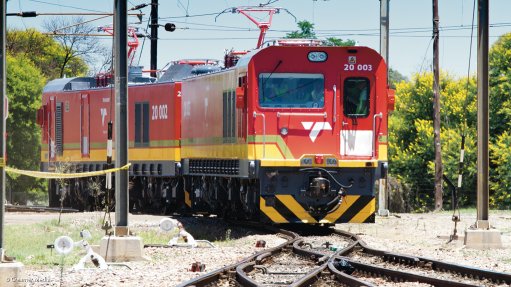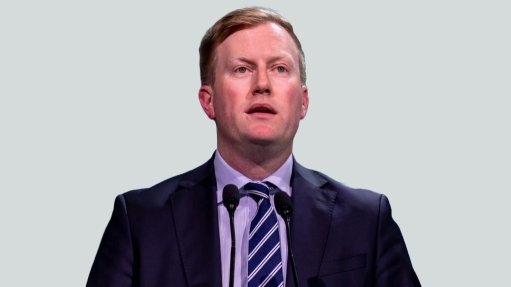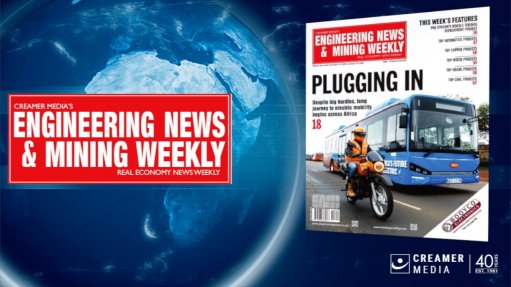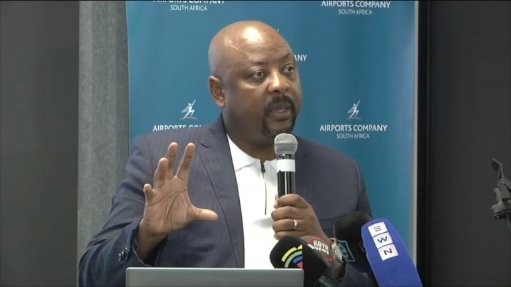Trade-off study points to merits of progressing to a scoping study at West Wits’ WBP
A preliminary trade-off study by independent consulting engineering firm Bara Consulting of various workstreams indicates that ASX-listed West Wits Mining’s Project 200 has merits for progressing to a further scoping study on increasing the Witwatersrand Basin Project’s (WBP’s) production potential.
West Wits MD and CEO Jac van Heerden says the company’s technical teams, together with independent consultants, have conducted encouraging preliminary work which has advanced Project 200 to a point where West Wits believes there is merit in embarking on a further scoping study process.
The company undertook Project 200 to explore the potential to increase production at the WBP to 200 000 oz/y of gold.
However, there are not yet reasonable grounds to determine whether such a production rate is achievable, therefore requiring a further scoping study to determine the viability for substantially increasing production in the current mine plan.
Bara completed Project 200’s Phase 1 which involved several trade-off studies on the critical constraints of the existing mine plan, including mine design and infrastructure, a potential for a metallurgical plant, a tailings deposition facility and dewatering processes.
As for mine design and infrastructure, work was done to rework the current scoping study’s mine design and scheduling to determine the potential for an improved monthly production rate.
To enable an increased production rate, supplementary infrastructure would be required to access the three gold-bearing reefs.
As such, several potential shaft access points, existing and new, were identified in the mining right area, which will be investigated further for hoist capacity and the ability to sustain the necessary increased production rates.
Conceptually, the Kimberley reef, Bird reef and Main reef can be connected through either underground or surface infrastructure aimed at mining the upper areas; whereas, new or refurbished shaft infrastructure would be assessed for servicing the deeper sections to enable higher production rates over the life-of-mine (LoM).
In terms of introducing a metallurgical plant, the report reveals that, with the assumption of a third-party process facility, the current scoping study’s production levels average at about 55 000 t a month over the LoM, with peak production at 75 000 t a month.
The construction of a new processing facility would be considered as part of the Project 200 strategy to meet the demands of an increased production rate.
In addition, surface space constraints and the desire to keep dust emissions and noise pollution to a minimum, led to the consideration of placing sections of the process plant underground.
However, the complexity of installing the milling circuit underground was deemed unfavourable and, therefore, the study recommends that the construction of a metallurgical plant completely on surface be assessed.
In this regard, expansion of West Wits’ existing 16 ha surface landholding at the Qala Shallows would be the primary area investigated for a new process plant.
As for the tailings deposition strategy, if the construction of a metallurgical plant proves to be viable, the new scoping study stage would proceed to investigate the most suitable tailings deposition processes.
In this regard, the scoping study will investigate several options, including filtered tailings being delivered and deposited by truck onto surface areas, hydraulic tailings being pumped onto existing licensed brownfield storage facilities which are owned and operated by third parties, or a hydraulically-pumped stream of tailings being deposited into the larger underground voids.
Regarding dewatering, the trade-off studies indicate that dewatering areas under the existing scoping study is not required to increase production rates as flooded areas are excluded from the mine plan.
However, dewatering sections of the Witwatersrand basin would likely provide a significant value-add and strategic advantage to the overall WBP by exposing additional areas of known mineralisation currently excluded from West Wits’ mineral resource estimate (MRE) and scoping study.
The areas of specific focus include the Kimberly reef in the west portion of the mining right area and sections below 400 m at Bird Reef East and Main reef.
Project 200 Phase 2 will likely investigate the method and impact of dewatering in two stages, the first of which is expected to present the optionality of mining on-reef with more mechanised methods such as breast mining or long-hole open stoping.
Stage 2 involves historical areas flooded following years of dormancy. This stage of dewatering can be conducted in areas flooded following years of dormancy which are excluded from the existing mine plan and that hold an estimated 4.28-million ounces of resources.
If dewatering of these areas was determined to be viable, new areas under the mining right would be open to exploration, with the potential for competent person consideration and possible inclusion as part of the overall WBP’s MRE.
West Wits also reports that constructive exploratory discussions with government regulatory authorities indicate that they are receptive to water handling initiatives which would potentially yield positive results.
The miner also states that initial discussions with the relevant government departments have been positive and have a high likelihood of success following stipulated guidelines.
Comments
Press Office
Announcements
What's On
Subscribe to improve your user experience...
Option 1 (equivalent of R125 a month):
Receive a weekly copy of Creamer Media's Engineering News & Mining Weekly magazine
(print copy for those in South Africa and e-magazine for those outside of South Africa)
Receive daily email newsletters
Access to full search results
Access archive of magazine back copies
Access to Projects in Progress
Access to ONE Research Report of your choice in PDF format
Option 2 (equivalent of R375 a month):
All benefits from Option 1
PLUS
Access to Creamer Media's Research Channel Africa for ALL Research Reports, in PDF format, on various industrial and mining sectors
including Electricity; Water; Energy Transition; Hydrogen; Roads, Rail and Ports; Coal; Gold; Platinum; Battery Metals; etc.
Already a subscriber?
Forgotten your password?
Receive weekly copy of Creamer Media's Engineering News & Mining Weekly magazine (print copy for those in South Africa and e-magazine for those outside of South Africa)
➕
Recieve daily email newsletters
➕
Access to full search results
➕
Access archive of magazine back copies
➕
Access to Projects in Progress
➕
Access to ONE Research Report of your choice in PDF format
RESEARCH CHANNEL AFRICA
R4500 (equivalent of R375 a month)
SUBSCRIBEAll benefits from Option 1
➕
Access to Creamer Media's Research Channel Africa for ALL Research Reports on various industrial and mining sectors, in PDF format, including on:
Electricity
➕
Water
➕
Energy Transition
➕
Hydrogen
➕
Roads, Rail and Ports
➕
Coal
➕
Gold
➕
Platinum
➕
Battery Metals
➕
etc.
Receive all benefits from Option 1 or Option 2 delivered to numerous people at your company
➕
Multiple User names and Passwords for simultaneous log-ins
➕
Intranet integration access to all in your organisation
















